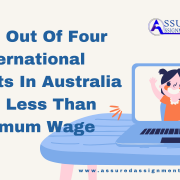Introduction
The case Bowman et al. v Her Majesty Queen, 2019 ONSC concerns a decision on whether courts can review a cabinet policy issue related to the cancellation of government projects. Generally, courts can not compel the government to continue or discontinue a process of implementing a pilot project which involves government funding. However, in this case, the subject court could have used its discretion to compel and encourage the government or an alternative party to continue undertaking the project due to its benefits and potential loss to the stakeholders who relied on the pilot project. Despite the applicants in the case making cogent and clear submissions with regards to the importance of the pilot project and harm they have suffered following its cancellation, the pilot project is a governmental funding decision that can’t be addressed by the courts through a judicial review process.
The court ruled that the prayers sought by the applicant to quash the decision to cancel the project could not be granted since granting such would result in the government continuing its funding projects (Cave, 2020). Courts have no authority to make such a ruling or compel the government to continue its funding since it was a policy decision that is premised on electoral expediency and political considerations as opposed to legitimate expectations and rights. Contrary to this ruling is the fact that a lot of evidence shows that the pilot project had aided a lot of people. Tracey Mechfske, Susan Lindsay, Grace Hilton, and Dana Bowman are some of the beneficiaries, together with all the 2000 participants who have received payments. The project was to go for 3 years. As numerous such people had set their priorities in line with the project (Cave, 2020). Canceling the project without sufficient notice to enable potential beneficiaries to reorganize their priorities is a blatant violation of their right to be informed.
Case Facts
The case Bowman et al. v Her Majesty Queen, 2019 ONSC involves Tracey Meschefske, Susan Lindsay, Doyle Hillon, Grace Marie, and Dana Bowman as the applicants. These applicants were represented by Mike Perry. The respondents in the case were the minister of Children Community and Social Services and the Queen (Norris, 2019). Advocates on record for the respondents were Chantelle Blom and Christopher Thompson. The legal dispute was handled in the Divisional Court of the Ontario Superior Court of Justice. Judges presiding over the matter were Myers, Reid, and Thorburn.
Main issues
The government commenced the project in 2017 and termed it the pilot project. The main objective of the project was to diagnose whether vulnerable workers can be better supported by a basic income (Norris, 2019). Similarly, the project was initiated to figure out whether basic income would increase the chances that these workers had to achieve their potential and provide them with the needed security. The original goal of the project was that it was going to take a lengthy period before the results were absolute. Results from the project would be used to inform the approaches to basic income that would be adopted across the province.
After one year, the project was canceled by the Minister of Children, Social and Community Services, as opposed to the initially projected three years. Payments previously made under the project were to be halted in March of 2019 (Knill & Tosun, 2020). Consequently, the applicants filed a judicial review to quash this decision by the minister.
Procedural History of the Case and Ultimate Decision
The case was heard and determined by the divisional court. No appeals are on record for the case since leave to appeal sought by the appellants was denied by the court. The appellants, through their advocate, presented their case backed by evidence. This was followed by the respondents who also made their submissions through their advocate on record. The court then carefully considered the evidence and arguments before them (Knill & Tosun, 2020). An analysis of the case sufficed in which the court married the facts and legal issues with the existing laws and judicial precedence.
The four major issues which the court decided on were whether a policy issue could be subjected to a judicial review. The second issue was whether the decision by the minister altered legitimate expectations, obligations, and individual rights. Third was whether the decision by the minister was in bad faith, and lastly, whether the court had the mandate to quash the minister’s decision (Norris, 2019). Ultimately, the court held that despite the cogent argument by the applicants, the continuance of the pilot project did not amount to individual rights enforceable in courts.
Legal Significance
This case is of critical significance since it concerns very important issues in any government and how it relates to its subjects. Additionally, the case concerns the limits and extent to which the judiciary and courts can intervene and regulate policy frameworks of governments, especially when the same affects citizens in various ways (Bonin & Bedford, 2020). The divisional court in Ontario clearly stated that the court was limited as to its ability to quash the decision or compel the minister to stay his decision and continue the project. Policy decisions are matters of electoral expediency and not judicial in nature. The government decides on their policy framework and how they are supposed to fund it. As such, courts can not purport to direct the executive on the policies to take and how it should fund such policies (Knill & Tosun, 2020). Generally, the prayers sought were beyond the mandate of the divisional court.
Despite this truth, the court failed to recognize the plight of the applicants and the losses they were about to incur. The court could have made a ruling to cushion their plight, however inevitable. Courts, being a platform for justice, did not provide justice to the applicants and thethe 2000 beneficiaries of the project (Norris, 2019). The government makes policies in the interest of the people. The cancellation of the pilot project was not in the interest of the people. Similarly, these applicants weren’t adequately informed of the reasons for canceling the project.
Commentary
Several legal issues were discussed and determined by the court. One of the legal issues is when legal issues can be subjected to judicial review. The court was right to find that it had no jurisdiction to review policy considerations which would definitely motivate cabinet decisions. This decision by the court was absolutely right since a court of law cannot compel the government to pursue policies that it had no hand in formulating (Norris, 2019). This project involved funding. As such, the court cannot compel the ministry to continue funding even in cases where such a policy wasn’t financially sustainable. The case compares to many other cases, including Apotex Inc. v Ontario and Hamilton-Wentworth v Ontario where it was held that allocation of resources could never amount to enforceable rights under a judicial review process. Here, the judges did balance the application of the law, and no policy point was missed. However, thethe court, on its own motion, would have considered to applicants and harm that is likely to be caused to each of them and try to mitigate such harm (Bonin & Bedford, 2020). Justice will have been served since no party would have lost. Leaving the case as it was decided by the court would lead to a utilitaritarian nature of the court, which absolutely neglects the minority in favor of the minority. The policy ensures that the government channels its funds where it is needed while neglecting beneficiaries of the pilot project.
The other legal issue is whether the decision by the minister alters legitimate expectations, obligations, and individual rights. On the face of the record, the decision made by the court on this issue seems right. The court ruled that judicial review is inappropriate to this case since it is on a question of government policy. However, the applicants present a case which states that the decision has a toll on their financial interests (Bonin & Bedford, 2020). Most of them have grown to rely on payments from the project, and thus, any alteration of the project would likely affect the rights of the applicants. Merely stating whether this decision was right or wrong is an understatement since neither answer is appropriate.
There are many who would argue that the decision is right. At the same time, there are those who would argue that the decision is wrong. To harmonize these two arguments, one has to say that the court should have considered both parties’ plight in deciding the question. One such decision would be one is which allows the government to stop facilitating the project but not to entirely cancel the project (Kang, Kittilson, Hoekstra & Escobar-Lemmon, 2020). The government would have invited any interested party within the private sector to facilitate the pilot project for the remainder of the time as planned. This, however, was not an option given by the minister.
Numerous cases support the position of the applicants. These cases include Pharmaceutical Manufacturers Association of Canada v British Columbia and Black v Canada. In these cases, it was held that any decision which deprives an individual of an advantage which he or she legitimately expects to progress without being given sufficient reasons for such deprivation is inappropriate. The government, therefore, acted inappropriately. The judges did not distinctly overreach. However, they failed to look into the claims of the applicants more keenly (Kang, Kittilson, Hoekstra & Escobar-Lemmon, 2020). They were blinded by the need to secure the position of the government and fulfill their usual stand in reviewing policy decisions. This need led them to miss a vital point on ensuring that the beneficial aspects of the project continued. An alternative party would have sufficed at this instance and ensured that the project continued as planned.
The other issues, including whether the court had the power to quash the decision or whether the minister’s decision was in bad faith, had been well canvassed in court. The court rightly stated that the minister’s decision was not in bad faith, and the court had no power to quash such a decision (Kang, Kittilson, Hoekstra & Escobar-Lemmon, 2020). There wouldn’t have been a different ruling on these matters since by deciding otherwise, the divisional court would have overreached its mandate and decided a case which beyond its purview.
Conclusion
The general rule is that courts cannot decide on governmental policy issues through a judicial review process. This was the holding in the case of Bowman et al. v Her Majesty Queen, 2019 ONSC. Despite such a decision, the court failed to take certain pertinent issues into consideration. They failed to consider the beneficial impact that the pilot project had and the possible harm which would be caused to the stakeholders of the project. Had they considered both sides, there would have been justice served to both the government and the stakeholders who made the application in this court of law.
This case, therefore, raises many questions on the plight of individual rights when it comes to policy matters. As it is, the government can never be wrong when it comes to questions of policy and when it decides to end or continue such policies. However, there are certain policies related to essential social services by the government, such as healthcare, education, and security. When the government decides not to follow through with such policies, then subjects stand to suffer gravely. As such, the courts and all stakeholders should intervene and ensures that the government follows through with such policy initiatives. The case has great significance for future cases since it states that issues of government policy should not be touched by courts, especially on the grounds of judicial review. Continuously, courts will use this precedence to bar any person seeking relief against an infringing governmental policy. Similarly, leave to appeal will be denied by courts as a result of the decision made in this case. The court should have allowed for an appeal and in the interests of a developing jurisprudence. No single court can be an absolute fountain of knowledge on such matters so as to bar superior courts from considering the same issue.
References
Cave, J. (2020). Retreating to Justiciability: Drawing a Fine Line between’Legal’and’Moral’Rights Questions. WJ Legal Stud., 10, 1.
Kang, A. J., Kittilson, M. C., Hoekstra, V., & Escobar-Lemmon, M. C. (2020). Diverse and inclusive high courts: a global and intersectional perspective. Politics, Groups, and Identities, 8(4), 812-821.
Knill, C., & Tosun, J. (2020). Public policy: A new introduction. Red Globe Press.
Norris, M. (2019). Psychology and the Law in Canada. The Canadian Handbook for Careers in Psychological Science.











